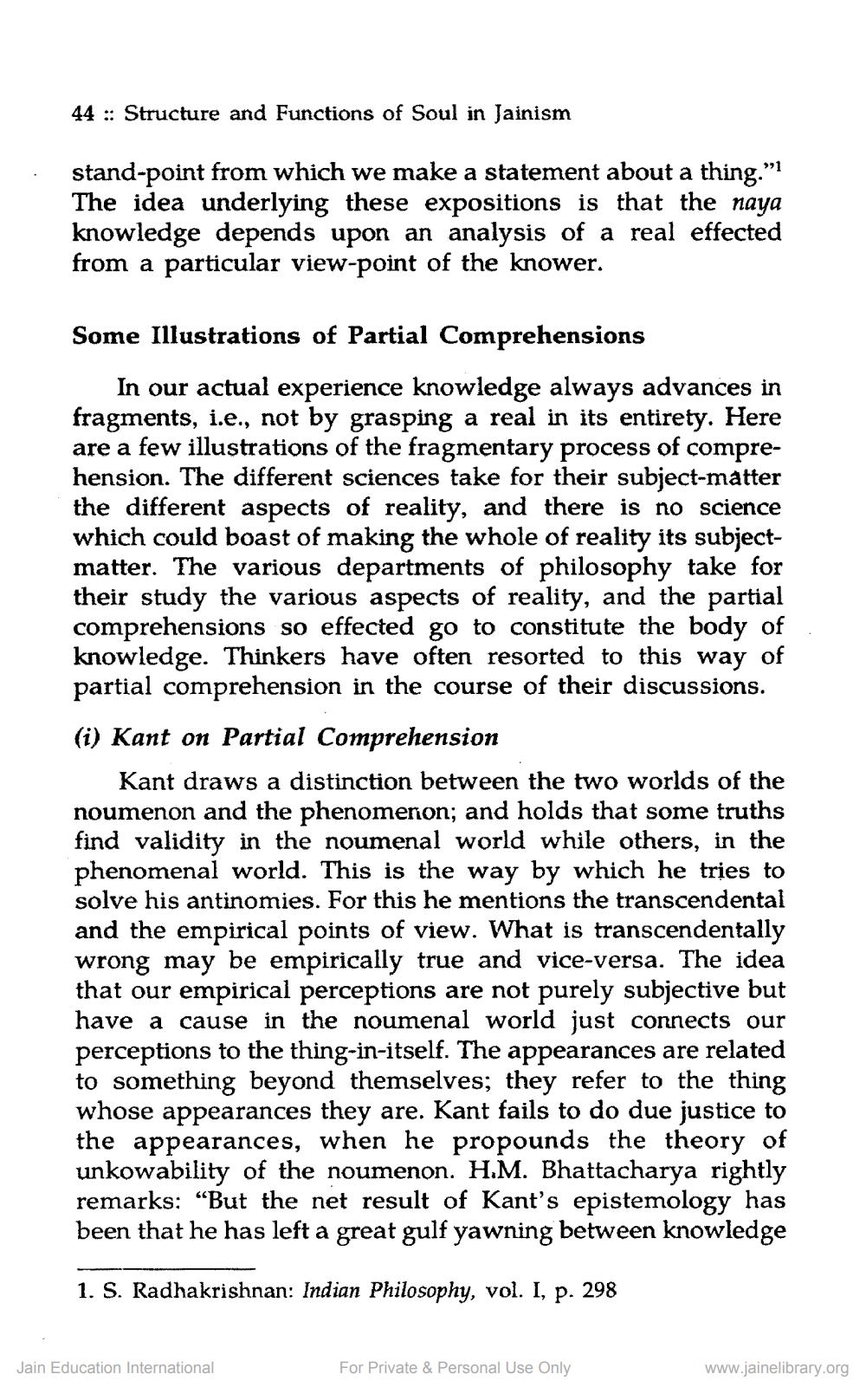________________
44 :: Structure and Functions of Soul in Jainism
stand-point from which we make a statement about a thing." The idea underlying these expositions is that the naya knowledge depends upon an analysis of a real effected from a particular view-point of the knower.
Some Illustrations of Partial Comprehensions
In our actual experience knowledge always advances in fragments, i.e., not by grasping a real in its entirety. Here are a few illustrations of the fragmentary process of comprehension. The different sciences take for their subject-matter the different aspects of reality, and there is no science which could boast of making the whole of reality its subjectmatter. The various departments of philosophy take for their study the various aspects of reality, and the partial comprehensions so effected go to constitute the body of knowledge. Thinkers have often resorted to this way of partial comprehension in the course of their discussions. (i) Kant on Partial Comprehension
Kant draws a distinction between the two worlds of the noumenon and the phenomenon; and holds that some truths find validity in the noumenal world while others, in the phenomenal world. This is the way by which he tries to solve his antinomies. For this he mentions the transcendental and the empirical points of view. What is transcendentally wrong may be empirically true and vice-versa. The idea that our empirical perceptions are not purely subjective but have a cause in the noumenal world just connects our perceptions to the thing-in-itself. The appearances are related to something beyond themselves; they refer to the thing whose appearances they are. Kant fails to do due justice to the appearances, when he propounds the theory of unkowability of the noumenon. H.M. Bhattacharya rightly remarks: “But the net result of Kant's epistemology has been that he has left a great gulf yawning between knowledge
1. S. Radhakrishnan: Indian Philosophy, vol. I, p. 298
Jain Education International
For Private & Personal Use Only
www.jainelibrary.org




